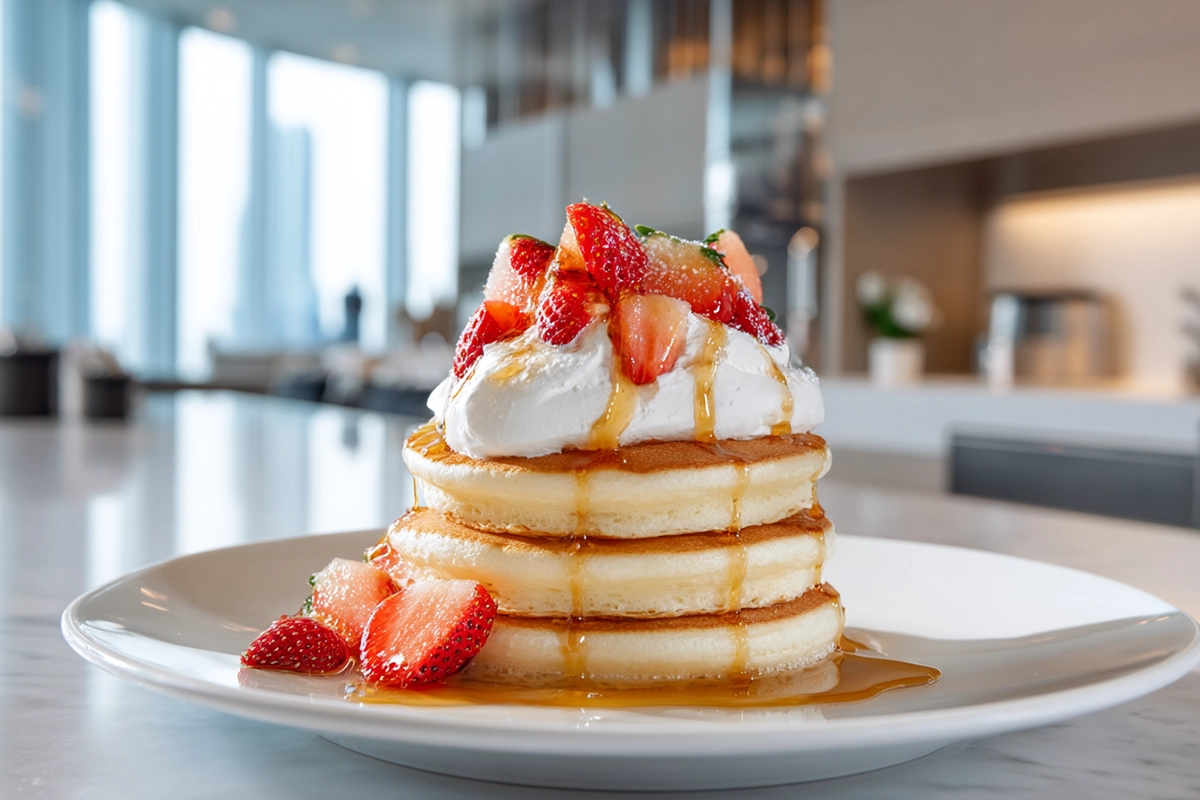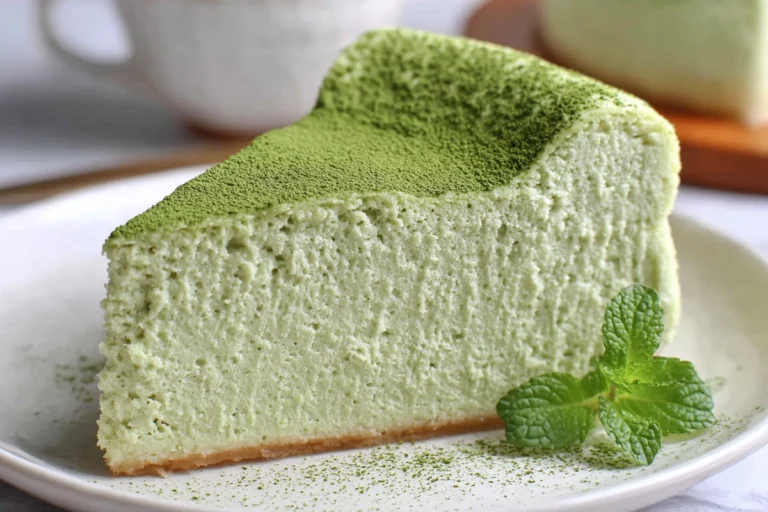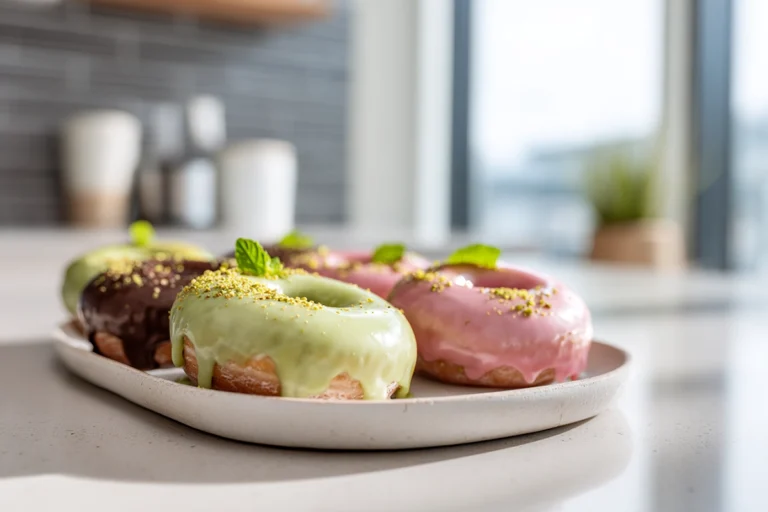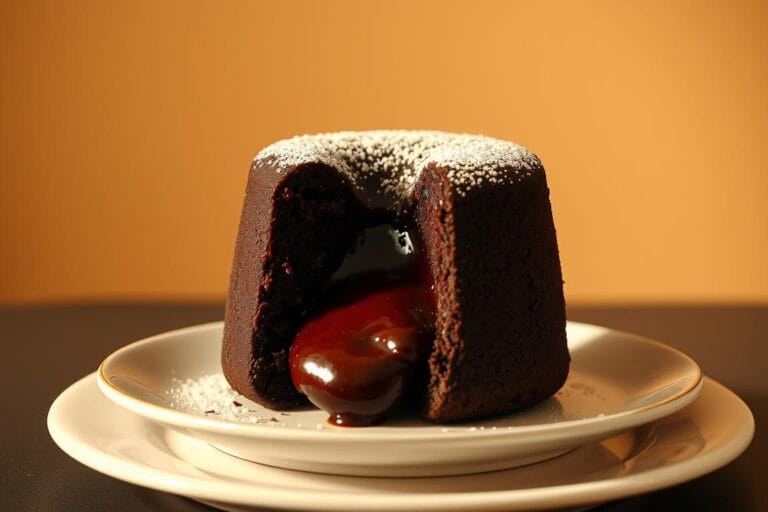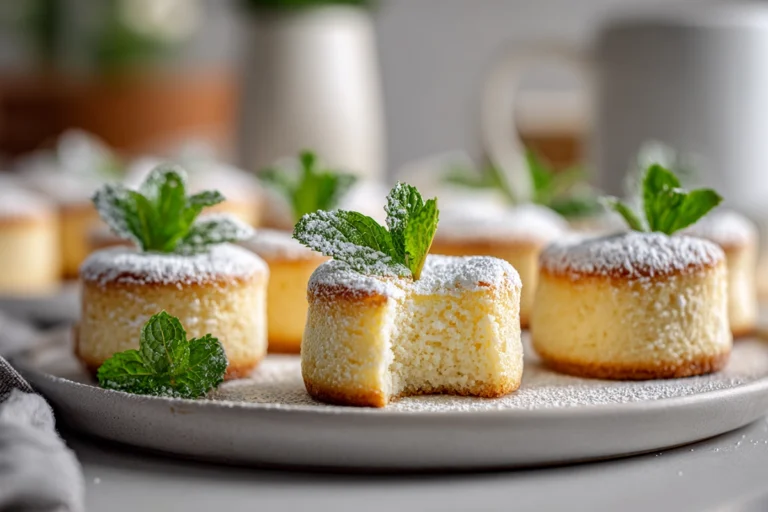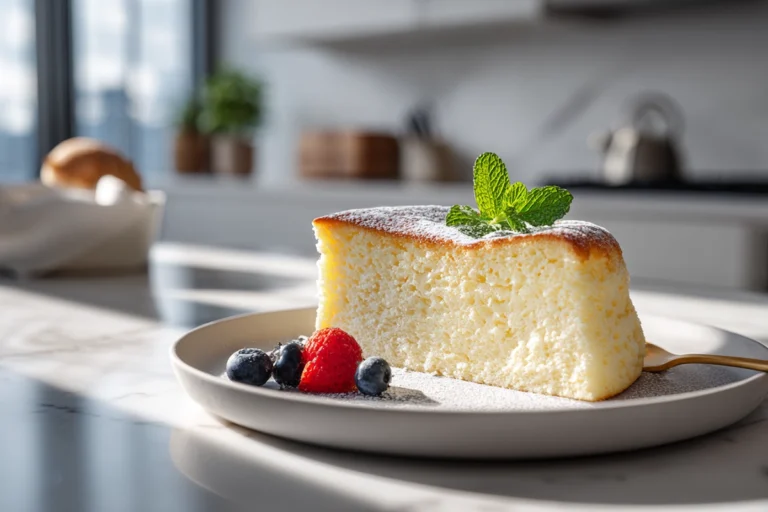Japanese Soufflé Pancakes: How to Make the Fluffiest, Jiggle-Worthy Pancakes at Home
If you’ve ever watched a video of Japanese soufflé pancakes wobbling on a plate like tiny edible clouds, you already know what makes them so irresistible. The first time I tried one at a café in Los Angeles, I couldn’t believe something so tall and airy could taste so rich. One bite and it practically melted away, leaving behind a hint of sweetness and that soft, custardy center that feels like breakfast and dessert all at once.
Now, the good news? You don’t need to fly to Tokyo or wait in line at a trendy brunch spot. You can create these fluffy miracles right in your own kitchen—with just a few ingredients, a little patience, and the right technique.
What Are Japanese Soufflé Pancakes?
Japanese soufflé pancakes are not your typical diner-style stack. They’re ultra-light, tall, and jiggly—like a cross between a classic American pancake and a French soufflé. Instead of using a simple batter, the magic lies in whipped egg whites, which give the pancakes that signature airy rise.
These pancakes first appeared in Japan’s dessert cafés before making their way to the U.S. around 2019, where they quickly became an internet sensation. You’ll find them in places like Fluffy Fluffy Café or Gram Pancakes, often served with powdered sugar, whipped cream, and fruit. Their charm isn’t just in the taste—it’s in the texture. When you cut into them, they gently deflate with a sigh, revealing a pillowy interior that’s both delicate and rich.
If you’ve ever had trouble making your regular pancakes fluffy, this is your next weekend project. Once you master the fold-and-flip, you’ll see why these cloudlike cakes have earned cult status worldwide.
Print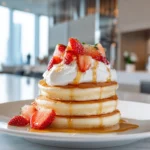
Japanese Soufflé Pancakes
- Total Time: 35 minutes
- Yield: 4 servings 1x
- Diet: Vegetarian
Description
These Japanese soufflé pancakes are light, fluffy, and impossibly soft—like biting into a sweet, jiggly cloud. Made by folding whipped egg whites into a delicate yolk batter, they rise tall and airy, creating the perfect café-style breakfast or brunch treat right at home.
Ingredients
2 large eggs, separated
2 tablespoons (25 g) sugar
2 tablespoons (30 ml) milk
1/2 teaspoon vanilla extract
1/3 cup (40 g) cake flour, sifted
1/4 teaspoon baking powder
1/4 teaspoon cream of tartar (or lemon juice)
Neutral oil or butter, for greasing
Powdered sugar, syrup, or whipped cream, for serving
Instructions
Separate egg whites and yolks into two clean bowls.
Whisk yolks with sugar until pale and creamy, then add milk and vanilla.
Sift in cake flour and baking powder, stirring until smooth.
In another bowl, beat egg whites with cream of tartar until stiff peaks form.
Gently fold the meringue into the yolk mixture in three batches to keep the batter airy.
Lightly oil a nonstick pan and heat over low heat. Scoop batter into round mounds using a large spoon or piping bag.
Cover the pan with a lid and cook for 4–5 minutes. Add a bit more batter on top for extra height, cover, and cook another 4–5 minutes.
Carefully flip each pancake using two spatulas, cover again, and cook another 3–4 minutes until golden and set.
Serve immediately with powdered sugar, syrup, and fresh fruit.
Notes
Use room-temperature eggs for easier whipping and a more stable meringue.
Keep the heat low to cook through without burning.
Serve pancakes immediately; they deflate as they cool.
Add your favorite toppings like berries, whipped cream, or matcha syrup for variety.
- Prep Time: 20 minutes
- Cook Time: 15 minutes
- Category: Breakfast, Brunch
- Method: Stovetop
- Cuisine: Japanese
Nutrition
- Serving Size: 1 pancake
- Calories: 210
- Sugar: 13 g
- Sodium: 95 mg
- Fat: 8 g
- Saturated Fat: 3 g
- Unsaturated Fat: 4 g
- Trans Fat: 0 g
- Carbohydrates: 27 g
- Fiber: 0.5 g
- Protein: 6 g
- Cholesterol: 95 mg
Key Ingredients & Why They Matter
To get that perfect rise, every ingredient plays a role. Here’s what you’ll need for about four medium pancakes:
- 2 large eggs, separated
- 2 tablespoons (25 g) sugar
- 2 tablespoons (30 ml) milk
- 1/2 teaspoon vanilla extract
- 1/3 cup (40 g) cake flour, sifted
- 1/4 teaspoon baking powder
- 1/4 teaspoon cream of tartar (or lemon juice)
- Neutral oil or butter, for greasing
- Powdered sugar, syrup, or whipped cream, for serving
The yolks provide structure and richness, while the whipped whites (the meringue) give volume. Cake flour helps keep the texture fine and soft—something all-purpose flour just can’t match. Cream of tartar stabilizes the egg whites, helping them stay firm during folding and cooking.
If you’ve ever wondered why café soufflé pancakes are so tall, it’s because they’re cooked low and slow with a top lid. The steam creates lift without browning too quickly.
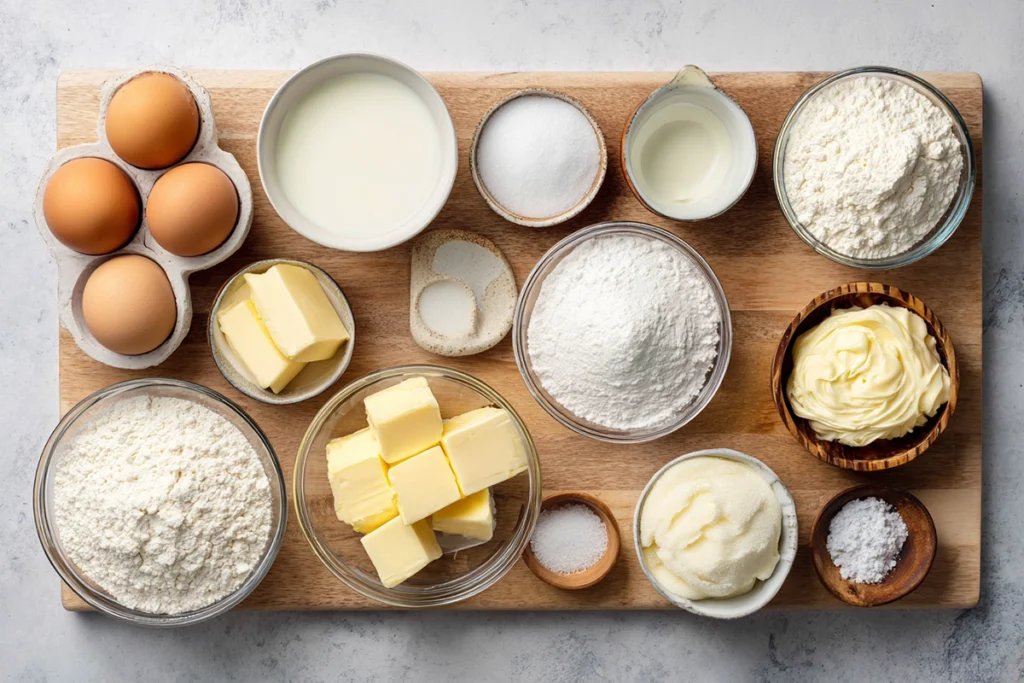
Step-by-Step: How to Make Japanese Soufflé Pancakes
Separate & Prepare
Start by separating your eggs carefully—any bit of yolk can ruin your meringue. Place the whites in a clean, grease-free bowl and chill them while you prepare the yolk mixture. In another bowl, whisk the yolks with sugar until pale and creamy, then add milk and vanilla. Sift in the cake flour and baking powder, stirring until smooth.
Whip the Meringue
Bring out your chilled egg whites and add cream of tartar. Using a hand mixer, beat until stiff peaks form. You’ll know it’s ready when you lift the beaters and the meringue stands tall without drooping.
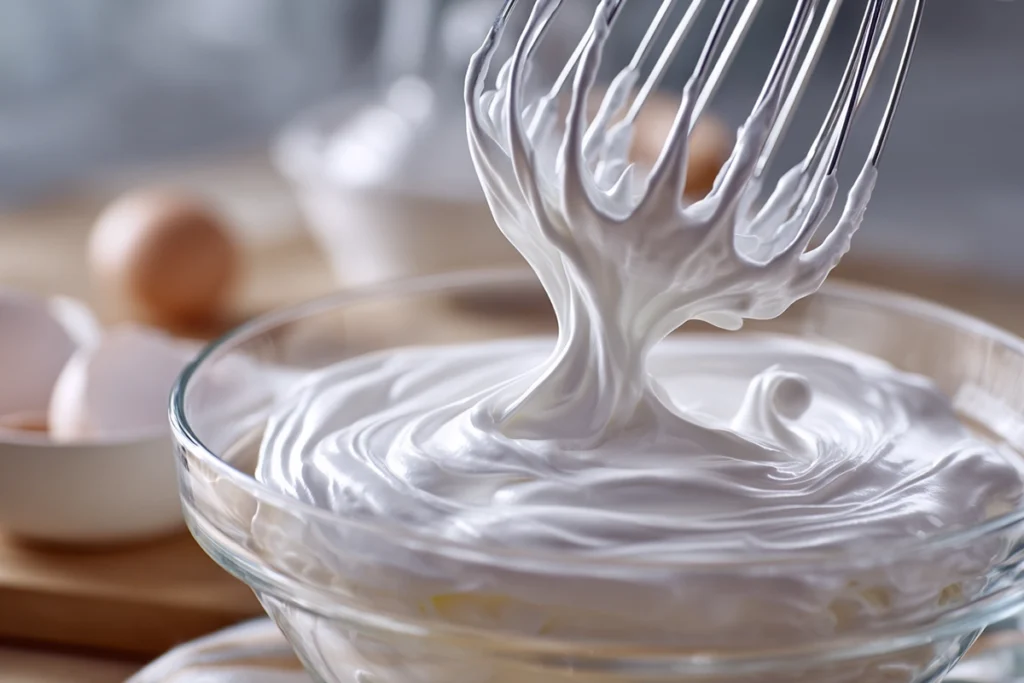
Fold & Combine
This part is crucial. Gently fold the meringue into the yolk batter in three additions. Use a spatula and light movements—imagine lifting clouds into the bowl. Overmixing will knock out the air, and you’ll lose that signature rise.
Cook Low & Slow
Lightly oil a nonstick pan and heat over a low flame. Scoop the batter into round mounds using a large spoon or piping bag. Cover the pan with a lid and let the pancakes steam for 4–5 minutes. Carefully add a spoonful more batter on top of each pancake for extra height, then cover again. When the edges set and the bottoms are golden, gently flip each one using two spatulas. Cover once more and cook another 3–4 minutes.
When they’re done, the pancakes should feel bouncy but set. Transfer them to a plate, dust with powdered sugar, and serve immediately. You’ll see them wiggle a little—yes, that’s part of the charm.
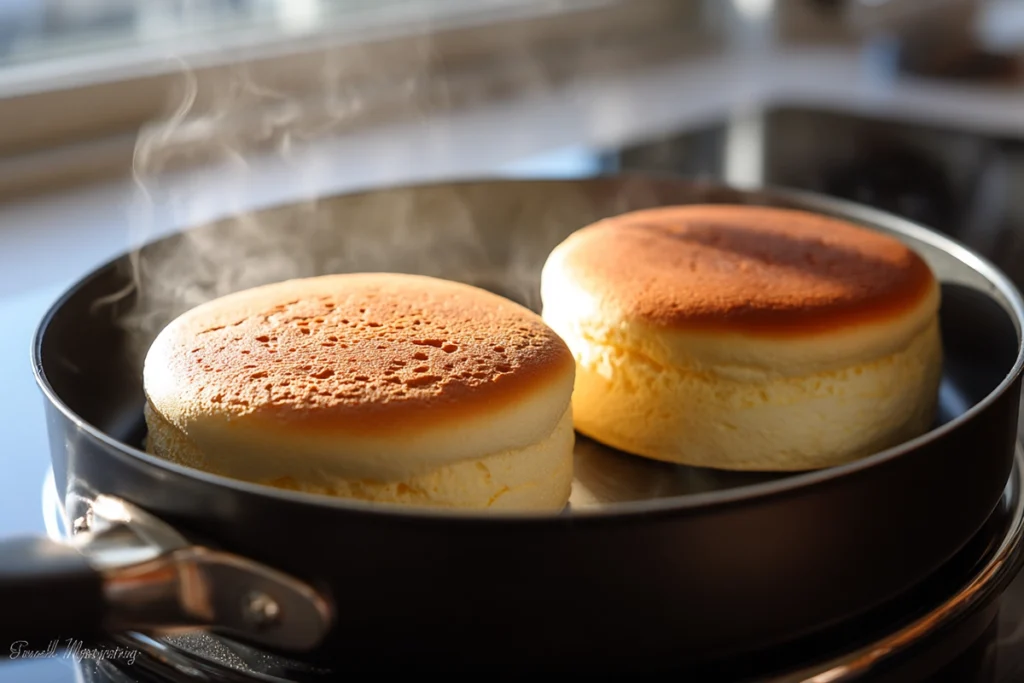
Serving & Presentation Tips
You’ve worked for that perfect fluff, so let’s show it off. Serve your Japanese soufflé pancakes right away—they deflate as they cool. A simple dusting of powdered sugar keeps things elegant, but toppings can turn them into a brunch showstopper.
Try:
- Whipped cream with fresh strawberries or blueberries
- A drizzle of maple syrup or honey
- A scoop of vanilla ice cream and matcha powder for a café-inspired twist
- Lemon curd or chocolate ganache for dessert-style pancakes
A little garnish goes a long way. Stack them high, add color with fruit, and watch them steal the spotlight on your breakfast table.
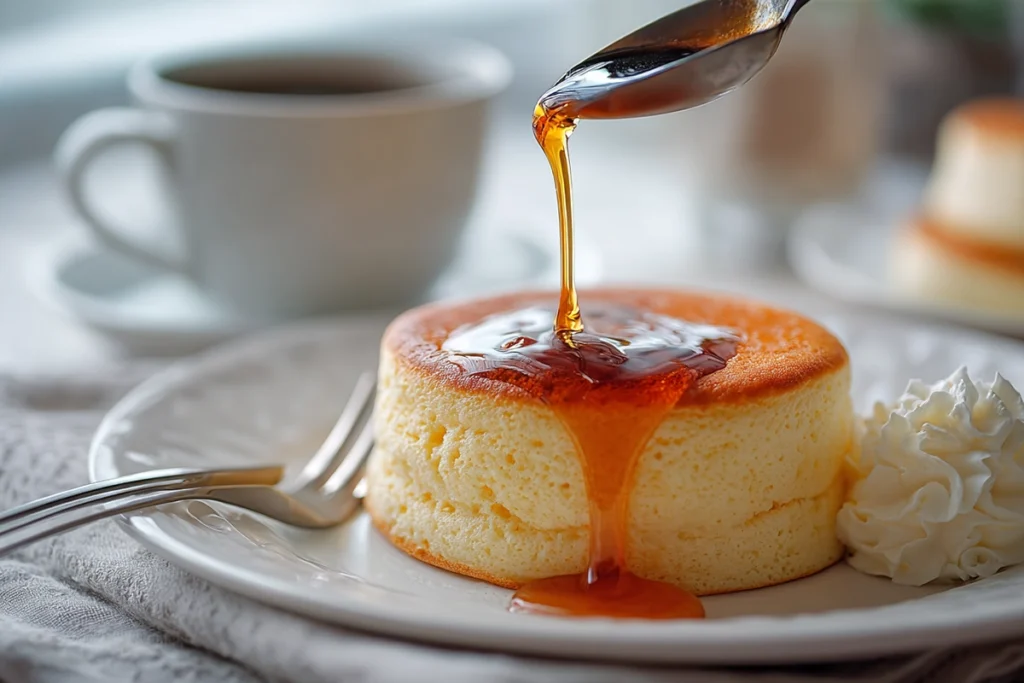
Dietary Variations & Substitutions
You don’t have to miss out on these cloudlike pancakes if you have dietary preferences—there are easy adjustments you can make.
Vegan Version
Replace the eggs with aquafaba (the liquid from canned chickpeas). Whip it just like egg whites to create volume. Use plant-based milk like oat or soy, and add a tablespoon of cornstarch to help the batter hold shape.
Gluten-Free Option
Swap the cake flour for a gluten-free blend made with rice flour and tapioca starch. Gluten-free pancakes may not rise quite as high, but the texture will still be soft and fluffy.
Low-Calorie or Low-Fat
Use skim milk or almond milk instead of whole milk and reduce the sugar by half. Cook them smaller to control portions—they’re so satisfying that even a mini stack feels indulgent.
Halal Adaptation
Most ingredients are naturally Halal, but double-check that your vanilla extract doesn’t contain alcohol. You can substitute it with vanilla bean paste or Halal-certified flavoring.
These substitutions won’t compromise the magic; they just adjust the experience to fit your needs.
Common Mistakes & Troubleshooting
If your pancakes turned out flat or dense, don’t panic—everyone’s first batch is a learning curve. Usually, the issue lies in the meringue or the cooking temperature.
If the meringue deflates, it was either overbeaten or folded too roughly. Pancakes collapsing after cooking often means the heat was too high, cooking the outside faster than the inside. Try lowering the temperature and keeping the lid on longer next time.
And if you’re tempted to stack them early, wait until they’re fully set. Patience pays off here—your reward is a tower of pancakes that look straight out of a Tokyo café.
The next time you crave a brunch that feels luxurious yet homemade, whip up a batch of Japanese soufflé pancakes. They’re light enough for a weekday treat but special enough for a weekend celebration. Once you master the art of the soft flip and that perfect jiggle, you’ll wonder why you ever settled for ordinary pancakes again.
FAQ
Why do my Japanese soufflé pancakes collapse after cooking?
They usually deflate because the meringue lost its structure. This can happen if you overmix the batter or cook the pancakes too quickly on high heat. Keep the temperature low and fold gently to keep that fluffy, airy texture.
Can I make Japanese soufflé pancakes without a ring mold?
Yes! While molds help them rise evenly, you can still make them free-form. Just spoon the batter into tall mounds and cover the pan with a lid to trap steam. The pancakes might look more rustic, but they’ll still be soft and bouncy.
How do I make sure the pancakes cook through without burning?
Use the lowest heat setting and keep the pan covered. The trapped steam gently cooks the inside, while the low flame prevents the bottoms from browning too quickly. Slow and steady always wins with this recipe.
Can I make soufflé pancakes ahead of time?
They’re best served fresh since the signature “jiggle” disappears as they cool. If you need to reheat them, use a steamer or a covered skillet on low heat for a minute or two to bring back some of that fluffiness.
What’s the difference between Japanese soufflé pancakes and regular pancakes?
Regular pancakes rely on baking powder for lift, while these use whipped egg whites for that sky-high fluff. The result is lighter, softer, and almost custard-like inside—more dessert than breakfast, but worth every bite.
What Are Our Readers Saying?
There are no reviews yet. Be the first one to write one.

